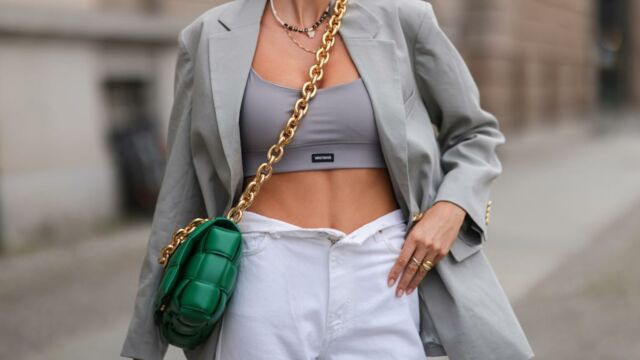6 Simple tips for building a more sustainable wardrobe

We all aim for a sustainable wardrobe, but getting started can be overwhelming. So, here’s a few tips to enjoy fashion responsibly.
Fashion trendsare cycling faster than we can keep up, giving us overwhelming anxiety about our style or being left out, prompting us to reach for items on a whim, without much consideration to where they came from or where they’ll end up.
Discover our latest podcast
We’ve all been tempted to reach for that trending £20 dress, just for it to be replaced by another a month down the track. And, even though we still enjoy the flowing garment, we refrain from ever wearing it in public for fear of being labelled ‘cheugy’, relegating it to the back of the wardrobe, or better yet, the thrift store.
More under this adMore under this adBy and far, fashion lovers are waking up to this pattern of retail behaviour and are calling for a movement towards more sustainable or slow fashion that considers each part of a garment’s supply chain from the generation of raw fabric right down to disposal.
But the concept of building an environmentally and socially conscious wardrobe can seem daunting and unattainable. At a glance, this kind of endeavour requires us to research each brand and item we buy and consider whether it could stand being a long-term resident in your closet. It can be time-consuming, confusing, limiting, and even a little expensive.
More under this adMore under this adAll these concerns are completely valid but as complicated as conscious fashion may seem, in the end, it’s a movement that’s worth getting involved in. So, we’ve curated a few steps to help you on your sustainable fashion journey that don’t necessarily involve being an eco-fashion connoisseur.
1. Shop your closet
Purchasing clothes from sustainable fashion brands and thrift stores isn’t always accessible for all sizes and budgets. But, getting involved in sustainable fashion doesn’t just mean buying from these places; using what you already have can be just as sustainable and is easily the best starting point.
More under this adMore under this adThink about the clothing you already own and how you could restyle or switch them up. This can help you get the most out of your wardrobe and fall in love with your clothes all over again.
2. Make your clothes last longer
The lifecycle of clothing isn’t what it used to be, but by taking extra care, you could own your clothes for longer and even prevent them from ending up in the landfill.
More under this adMore under this adTo make your clothes last longer, try to wash them less. This reduces any wear and tear or fading from the washing machine. Of course, if your clothes get stained or smelly, that warrants a wash, but make sure to follow the instructions on your garments care label.
Another tip is to repair your clothes if possible instead of throwing them away. A tiny hole can be fixed with just a few stitches.
More under this adMore under this ad3. Buy clothing that fits you
Nothing’s worse than buying a top or pants, just to realise they don’t actually fit. Often, returning the item is a hassle and whatever you bought just ends up collecting dust.
Nobody wants to feel uncomfortable all day, and when your clothes fit properly, you’re more likely to reach for them. There are a few ways to make sure of this:
More under this adMore under this ad- Try on clothing before you buy.
- Know your measurements when shopping online.
- Take your clothes to a tailor to get them properly fitted.
4. The 30 wears test
Buying new clothes isn’t a sin, and there are ways to do so consciously. But, whether you choose to shop from sustainable brands, thrift stores or even fast fashion, the first thing to do is consider how often you would wear what you buy.
Livia Firth, the founder of Eco-Age, began the #30Wears campaign that encourages people only to buy items they know they’ll wear. She told Harpers Bazaar:
More under this adMore under this adThe biggest message is every time you buy something, always think, 'Will I wear it a minimum of 30 times?' If the answer is yes, then buy it. But you'd be surprised how many times you say no.
Another question to ask yourself is ‘how many outfits can I make out of this item? Chances are, the more versatile a garment is, the more likely it will become a go-to staple piece.
More under this adMore under this ad5. Check for quality before buying
Higher quality is the key to ensuring your clothes last as long as possible. Clothing that’s unintentionally see-through, has loose threads or buttons, clunky zippers, or even just feels fragile likely isn’t designed to stand the test of time.
6. Choose trans-seasonal over trending
Another way to shop more sustainably is to choose clothing that can be worn through multiple different seasons as opposed to trending pieces.
More under this adMore under this adWhile some seasons call for bikini’s or raincoats, there’s not much worth or longevity in shelling out for a whole new summer wardrobe if it’s only sunny one week in July. Sometimes, it’s worth it for both your wallet and the environment to invest a little more in timeless, classic pieces that will last multiple years and multiple seasons.